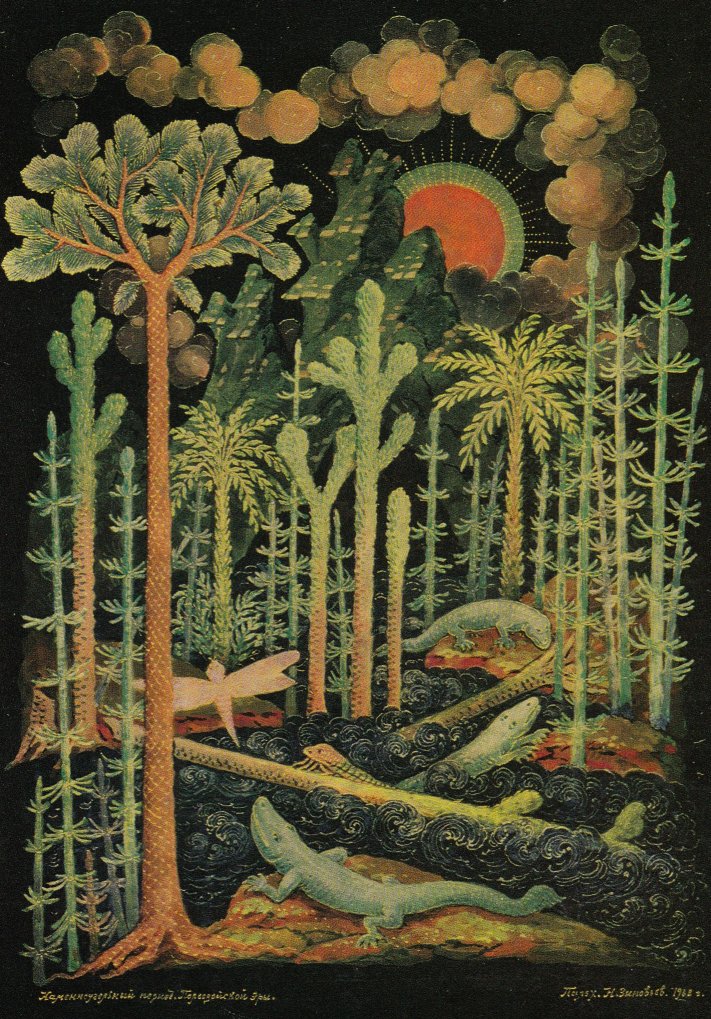1.6: Coal and Mud Forests
- Page ID
- 49651

This epoch took about 60 millions of years and is often described as the kind of tropical world, with warm and humid climate, plenty of CO2 in the atmosphere, and the predominance of ferns. In fact, in the world at that time, the climate was quite variable. For example, the Arctic continent Angarida (or “Siberia”, it corresponds with recent East Siberia) had really cold and dry climate. In contrast, the Euro-North-America was on the equator and had a tropical climate.
However, there was a little carbon dioxide and lots of oxygen; in fact, much more oxygen then it was on the whole history of Earth, both earlier and later. One of the proofs is an existence of giant palaeodictyopteroidean insects, some of them had more than a meter wingspan! As insects depend on the tracheal system for ventilation, it is safe to guess that there were plant of oxygen in the atmosphere to supply these big bodies.
The raise of oxygen is probably explained with appearance of forest biomes. Accumulation of coal is also related, the more carbon accumulated, the less should go into CO2.
These Carboniferous forests were dominated with primitive woody ferns, tree-like horsetails, and basal seed plants (they have quite misleading name “seed ferns” but in fact, belonged to groups which now include ginkgo and cycads). There were also related to conifers (cordaites and, finally, woody lycophytes which now exist only as small water quillworts (Isoëtes).
Forests of this epoch were peculiar, and more similar to mangroves then to “normal” forests. They were systematically flooded with the tides and surf waves, and at the same time, decomposition of organic matter was slow (as there were no phytophagous insects and little fungi). Consequently, the bottom of such forest was probably covered with mud. This mud was threaded with numerous rhizomes of woody lycophytes.
They, as many other trees of these times, had imperfect thickening, and sooner or later would break and fall. Besides, sporic trees had no control over their microscopic gametophytes, and this resulted in periodical outbursts when many young plants of the same age started to compete and eliminate each other. All of these factors add to the existing mess, and lower levels of these forests were literally inundated with large size wood litter.
This was the primary ground of the origin of reptiles and flying insects. These two groups could origin “together”, as elements of the one food chain also included trees. At the beginning of their evolution, many insect groups probably feed on generative organs of plants. Then dragonflies formed the first flying predators, and as the response, cockroaches and crickets went into the litter layer.
Some amphibians slowly evolved toward feeding on terrestrial invertebrates (like insects, slugs, and millipedes), and as a consequence, developed the full independence from water. This independence required substantial restructuring of the organization, in particular, the improvement of the respiratory system, skin, fertilization, and embryogenesis. Together, these changes resulted in the appearance of a new group, reptiles.
Seas in this epoch were dominated by mollusks, primitive arthropods, cartilaginous, and lobe-finned fishes.


